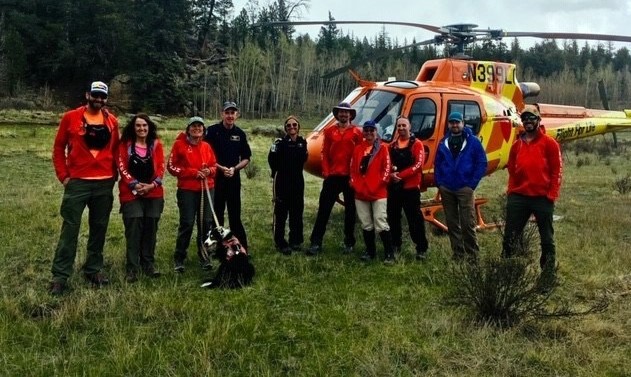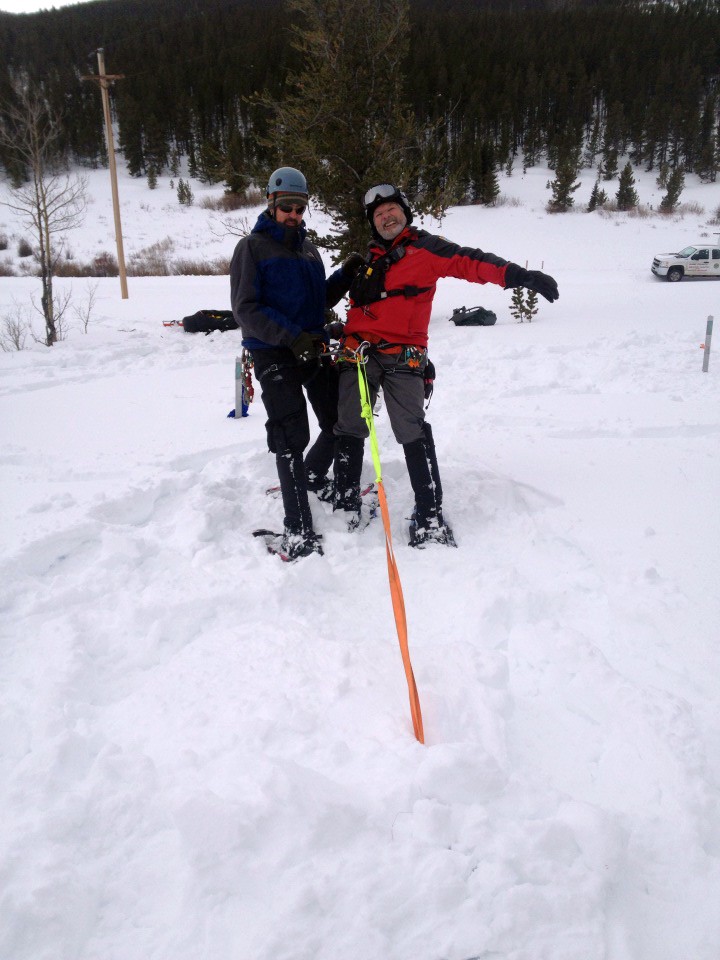Education and Safety
Education and Safety
Park County Search and Rescue provides the Park County community with a variety backcountry safety presentations. As winter approaches, members provide seminars on avalanche safety and beacon use. Other wilderness search and rescue presentations may be requested. Additionally, wilderness education and safety articles are posted on our web site.
The team holds evening training classes covering search and rescue topics for team members the second and fourth Tuesday of each month. These meetings are open to the public. Check the calendar for times and places.
BACKCOUNTRY SAFETY TIPS
Teach your kids what to do if they get lost in the woods; stay put and blow a whistle.
Always wear a helmet in areas with rockfall hazard, and belay any climb with a risk of injury.
The only cure for altitude sickness is to descend. Don't wait for it to become serious.
Plan to be off mountain tops by noon during summer months to avoid lightning. Always watch for signs of an incoming storm, and be willing to turn back if necessary.
Be aware that the temperature drops four degrees for every 1000 feet of elevation gain. Be prepared with proper clothing, and watch yourself and your companions for signs of hypothermia such as uncontrollable shivering, loss of coordination, confusion, and slowed speech.
Don't hike or climb alone! Although cell phones can be good to have in an emergency, don't rely on them; you may not get a signal when you most need one.
Always carry a map and compass and know how to use them. A GPS can be useful, but is no substitute for planning and preparation. Pay attention to planning your return route, and if you become seriously lost, stay where you are and bivouac.
Always carry the "10 Essentials" of backcountry travel. Carry a whistle too; it will travel much further than the sound of your voice.
For winter travel, take an avalanche class. Follow basic rules for avalanche safety, such as crossing slopes one at a time; always carrying a beacon, shovel and probe (and knowing how to use them); and watching for signs of unstable snow such as humping and cracking, collapsing layers, and recent avalanche activity.
AVALANCHE AWARNESS
The best way to avoid an avalanche is to be aware of current avalanche conditions and take precautions to avoid them. Avalanches occur when loose snow or a slab of snow starts moving down a slope. Avalanches are triggered by a variety of slope, snow and weather conditions but can also be triggered by human impact. Avoid steep slopes or smooth, open slopes.
Avoid mountainous terrain after heavy snowfall or prolonged periods of high wind. Do not cross steep side hills or narrow canyons. The safest routes are on ridge tops and on the windward side. Stay away from cornices. The next safest route is out in the valley, far from the bottom of a slope. Slopes at angles of 28 degrees or greater are in great danger of sliding.
Cross one person at a time. Never stop in the middle or the bottom of a slope. Never travel above your partners!
Prepare for the worst. Have a rescue plan. Have each member of the group carry avalanche gear. An avalanche beacon for each member of your party can save lives. Carry a shovel and probe and know how to use them! A cell phone is important to have, though it would take too long for rescue members to arrive to rescue an avalanche victim. Your party is the best source of saving a life.
Did You Know?
Avalanches travel at speeds up to 100 MPH
Most avalanches occur during or just after big storms when the snow is too heavy to stick.
The deadliest "Slab Avalanches", are mostly caused by snowmobilers or skiers being outside marked trails.
Ski Patrols use explosives to cause snowslides, reducing risk of major avalanches.
Most avalanche victims die in half an hour, many within five minutes.
In the US, there are about 20 deaths per year due to avalanches.


